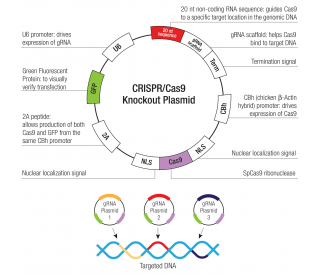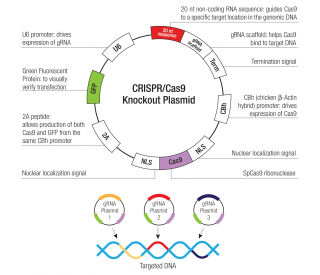详细说明
Species Reactivity
Human, Mouse, Rat
Specificity
Detects human, mouse, and rat PEDF R/PNPLA2 in direct ELISAs and Western blots.
Source
Polyclonal Sheep IgG
Purification
Antigen Affinity-purified
Immunogen
E. coli-derived recombinant mouse PEDF R/PNPLA2
Val162-Gly253
Accession # Q8BJ56Formulation
Lyophilized from a 0.2 μm filtered solution in PBS with Trehalose. *Small pack size (SP) is supplied as a 0.2 µm filtered solution in PBS.
Label
Unconjugated
Applications
Recommended
ConcentrationSample
Western Blot
1 µg/mL
See below
Simple Western
10 µg/mL
See below
Immunohistochemistry
5-15 µg/mL
See below
Please Note: Optimal dilutions should be determined by each laboratory for each application. are available in the Technical Information section on our website.
Data Examples
Immunohistochemistry | PEDF R/PNPLA2 in Mouse Kidney. PEDF R/PNPLA2 was detected in perfusion fixed frozen sections of mouse kidney using 15 µg/mL Sheep Anti-Human/Mouse/Rat PEDF R/PNPLA2 Antigen Affinity-purified Polyclonal Antibody (Catalog # AF5365) overnight at 4 °C. Tissue was stained with the Anti-Sheep HRP-DAB Cell & Tissue Staining Kit (brown; Catalog # ) and counterstained with hematoxylin (blue). Specific labeling was localized to the plasma membrane of epithelial cells in tubules. View our protocol for . |
Western Blot | Detection of Human and Mouse PEDF R/PNPLA2 by Western Blot. Western blot shows lysates of human adipose tissue and mouse adipose tissue. PVDF membrane was probed with 1 µg/mL of Sheep Anti-Human/Mouse/Rat PEDF R/PNPLA2 Antigen Affinity-purified Polyclonal Antibody (Catalog # AF5365) followed by HRP-conjugated Anti-Sheep IgG Secondary Antibody (Catalog # ). A specific band was detected for PEDF R/PNPLA2 at approximately 55 kDa (as indicated). This experiment was conducted under reducing conditions and using . |
Simple Western | Detection of Mouse PEDF R/PNPLA2 by Simple WesternTM. Simple Western lane view shows lysates of mouse adipose tissue, loaded at 0.2 mg/mL. A specific band was detected for PEDF R/PNPLA2 at approximately 59 kDa (as indicated) using 10 µg/mL of Sheep Anti-Human/Mouse/Rat PEDF R/PNPLA2 Antigen Affinity-purified Polyclonal Antibody (Catalog # AF5365) followed by 1:50 dilution of HRP-conjugated Anti-Sheep IgG Secondary Antibody (Catalog # ). This experiment was conducted under reducing conditions and using the 12-230 kDa separation system. |
Preparation and Storage
Reconstitution
Reconstitute at 0.2 mg/mL in sterile PBS.
Shipping
The product is shipped at ambient temperature. Upon receipt, store it immediately at the temperature recommended below. *Small pack size (SP) is shipped with polar packs. Upon receipt, store it immediately at -20 to -70 °C
Stability & Storage
Use a manual defrost freezer and avoid repeated freeze-thaw cycles.
12 months from date of receipt, -20 to -70 °C as supplied.
1 month, 2 to 8 °C under sterile conditions after reconstitution.
6 months, -20 to -70 °C under sterile conditions after reconstitution.
Background: PEDF R/PNPLA2
PEDF R (Pigment epithelium derived factor receptor; also known as ATGL, PNPLA2, and Desnutrin) is a 55 kDa member of the PNPLA family of proteins. It is expressed in adipocytes, hepatocytes, skeletal muscle, and pigment epithelium. PEDF R specifically hydrolyses triglycerides, releasing long-chain fatty acids. Mouse PEDF R is described as being a 486 amino acid (aa) type II transmembrane (TM) protein. Its TM segment is stated to span aa 9-29. Alternatively, it may have a hydrophobic lipid-association domain between aa 267-295. It contains a palatin domain (aa 10-179) with a conserved GxSxG enzymatic motif. There are multiple splice forms. Two show alternate start sites at Met57 and Met232, while two others show a deletion of aa 163-196 and aa 253-308, respectively. Over aa 162-253, mouse PEDF R shares 98% and 93% aa sequence identity with rat and human PEDF R, respectively.
Long Name:
Pigment Epithelium-derived Factor Receptor/Patatin-like Phospholipase Domain-containing Protein 2
Entrez Gene IDs:
57104 (Human); 66853 (Mouse); 361676 (Rat)
Alternate Names:
Adipose triglyceride lipase; ATGL; ATGL1110001C14Rik; Calcium-independent phospholipase A2; Desnutrin; EC 3.1.1.3; FP17548; IPLA2-zeta; patatin-like phospholipase domain containing 2; patatin-like phospholipase domain-containing protein 2; patatin-like phospholipase domain-containing protein 2-like; PEDF R; PEDFR; PEDF-R; Pigment epithelium-derived factor; PNPLA2; Transport-secretion protein 2; transport-secretion protein 2.2; triglyceride hydrolase; TTS2; TTS2.2; TTS-2.2; TTS2DKFZp667M109







![Anti-CARD11 antibody [EPR2557] 100µl](https://yunshiji.oss-cn-shenzhen.aliyuncs.com/202407/25/ryuecwsu03m.jpg)
![Anti-CARD11 antibody [EPR2557] 40µl](https://yunshiji.oss-cn-shenzhen.aliyuncs.com/202407/25/0l4lvuuesv1.jpg)

![Anti-Caspase-9 antibody [E23] 100µl](https://yunshiji.oss-cn-shenzhen.aliyuncs.com/202407/25/3jnd4412gqi.jpg)

![Anti-CKS2 antibody [EPR7946(2)] 100µl](https://yunshiji.oss-cn-shenzhen.aliyuncs.com/202407/25/cfdt44gkqre.jpg)



 粤公网安备44196802000105号
粤公网安备44196802000105号